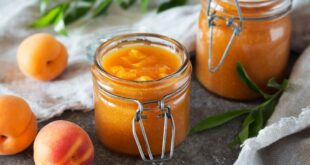Useful information for you, brought to you by Garden NZ
Introduction
A | B | C | D | E | F | G | H | I | J | K | L | M | N | O | P | Q | R | S | T | U | V | W | Y | Z
Habit (or growth habit)
The complete picture of the way a plant grows; a species may be described as being of ‘compact’, weeping’ or ‘upright’ habit, for instance.
Habitat
The environment in which a plant is usually found growing – the concept of habitat encompasses many factors, the most important being climate and soils, but microclimate is also significant, as are a plant’s interactions with all the other plants, animals and micro-organisms present.
Hanging Basket
A container designed to be suspended in order to show trailing plants such as Ivy, Christmas Cactus or Fuchsias to their best advantage.
Happy Roses
A natural health tonic for roses. A special blend of natural 'goodies' that have been blended together to give roses everything they need to thrive.
Hardiness
In a wide sense, the ability to withstand adverse conditions, but in gardening the use of this term has narrowed to mean frost hardiness, at least in those parts of the world where frost is a major factor in determining what plants can be grown.
Head
Any dense aggregation of flowers, their individual stalks absent or very short. The composite or daisy family (Asteraceae) is characterised by its flowerheads, but they are found in many other plants as well, for example Monarda, Scabiosa, Platanus.
Heath
Any plant of the Genus Erica, or sometimes used in a wider sense for other small-leafed shrubs of the family Ericaceae or its Australasian equivalent Epacridaceae; or a type of vegetation (also called Heathland) in which shrubs like Heaths and Heathers (Calluna) dominate, usually occurring on shallow, poorly drained, acid soils on exposed hills or moors – as in the ‘blasted heath’ in Macbeth.
Hedge
A close planting of trees or shrubs, their branches intertwining and acting as a barrier or fence. Hedges can be almost any height or width, depending on the species used, but the typical garden hedge is 5-10ft (1.5-3m) high and composed of a single species of shrub or small tree such as box, Holly, Yew or Privet, plants that respond to regular clipping by producing very dense, compact foliage and that are very long-lived.
Heel
A sliver of old wood retained at the base of a cutting. It is traditional in taking cuttings of carnations and roses.
Helleborus- Winter Rose
Helleborus, commonly known as "Winter Roses", are the real jewels in the outdoor winter garden. Many gardeners treasure their Hellebores and in recent years extensive breeding in New Zealand has produced some fabulous varieties.
Herb
In botany, any plant that does not have permanent wood stems, such as Petunias and Zinnias. In gardening, a plant whose leaves or shoots are added to food to enhance its flavour or used in the preparation of medicines.
Herbaceous
A perennial plant which dies down to the ground each year; a herbaceous border is a planting composed entirely of such plants, for example Delphiniums and Chrysanthemums.
Home & Garden Magazine
See Consumer Home & Garden.
Horticulture
The art and science of gardening. Commercial horticulture is traditionally distinguished from agriculture in covering fruit, flower and small-scale vegetable growing, as well as the nursery industry, whereas agriculture covers broad-acre farming activities.
Hosta
Shady characters, stunning in mass and great in containers- Hostas add richness, and texture to any garden.
House Plant
Any kind of plant that can be grown for ornamental purposes inside a house. The house plants of temperate regions mostly originate from warmer parts of the world, many being known as outdoor garden plants in subtropical climates (e.g. Abutilons, Poinsettias). The most widely grown house plants are those that will tolerate the most adverse conditions, in particular very low light levels, low humidity, dust, and air polluted by gas combustion. Aspidistras and Aansevierias are renowned for their hardiness in these respects.
Humus
The organic content of soil, in nature derived mostly from fallen leaves, twigs, bark and dead roots. These are broken down by insects and other ground fauna at the same time as they are being decomposed by fungi and bacteria. Earthworms are important in distributing humus throughout the topsoil. The humus content of soil can be enriched with many organic materials, including manure, compost, dead leaves, peat and composted sawdust or pine bark. Humus returns nutrients to the soil and improves its texture and water retentiveness.
Hunkins Garden Products Ltd
If you are looking for any thing from Solar-powered garden lights, to pond pumps, wireless driveway alarms, filters and underwater lights then visit Hunkins Garden Products Limited.
Hybrid
A plant originating from the cross-pollination, either in the wild or as the result of match-making by the gardener, of two different species. If hybrids are crossed, the resulting plants may carry the genes of several species. Hybrids between plants of different genera are rare, though quite common among orchids.
Hybrid Group (see cultivar group)
In Situ applied to the sowing of seeds or rooting of cuttings directly in the ground where they are to grow. Incurved (of leaves, petals, leaf margins etc). Curving upward and inward, toward the center or base of the organ in question. The opposite is recurved, which means curving downward and outward.
Hyper Tufa – NureZ Art
Hyper-Tufa and colored concrete water features and sculptures studio open 7 days by appointment. Create your own art at a two day workshop or host a Living-Stone Art party. Buy direct – Water fountains, birdbaths, sculptures, planters, balls, garden seats or phone for your local outlet!








Join the Discussion
Type out your comment here:
You must be logged in to post a comment.